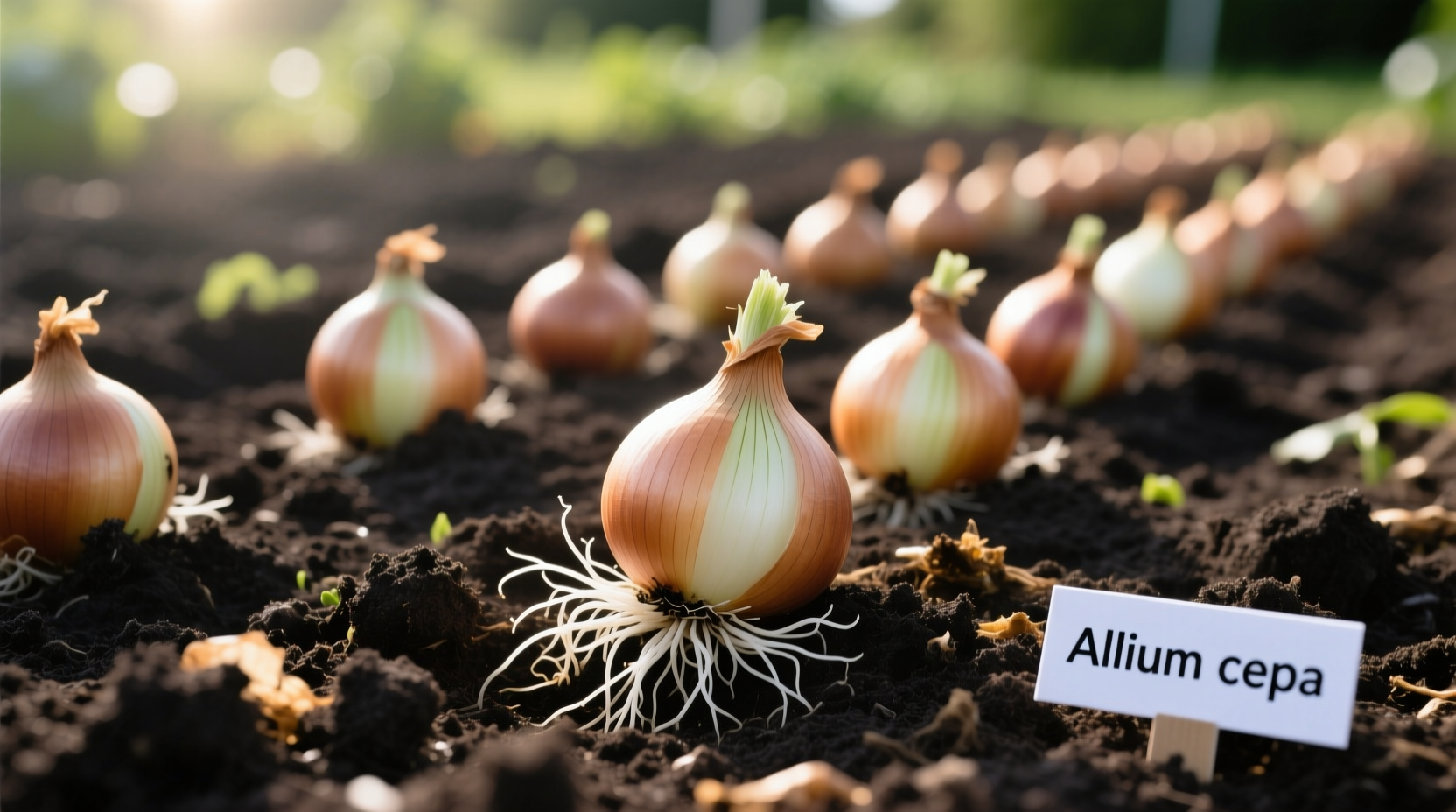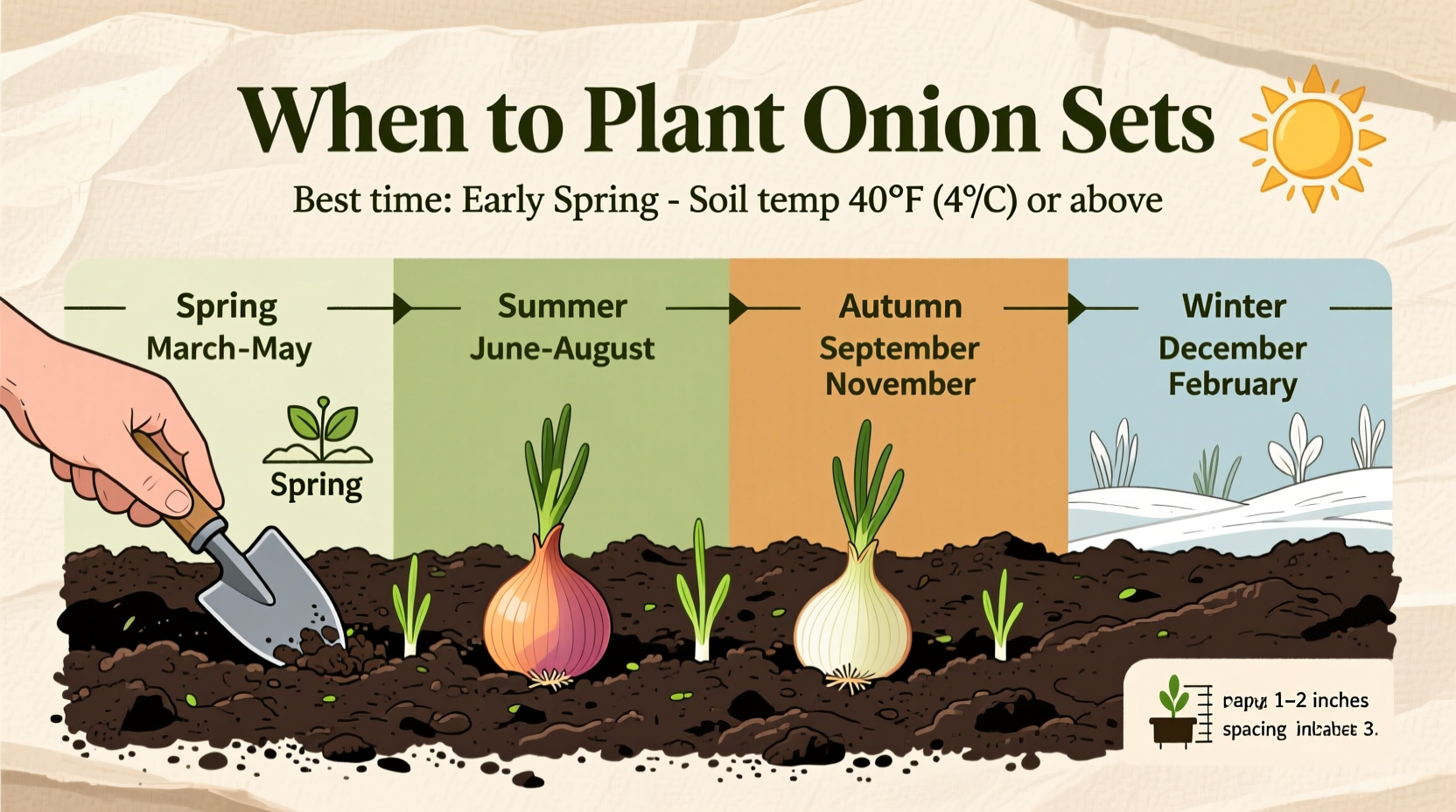Timing your onion set planting correctly makes the difference between a bountiful harvest and disappointing results. As a gardener, you need precise guidance that accounts for your specific climate zone and seasonal conditions. This guide delivers actionable planting schedules backed by agricultural research, helping you maximize your onion yield with confidence.
Why Onion Sets Outperform Seeds for Home Gardeners
Onion sets—small, partially grown bulbs—are the ideal starting point for most home gardeners. Unlike seeds that require 120-150 days to mature, sets typically mature in 80-100 days, giving you a harvest advantage. University extension research shows sets have 90%+ germination rates compared to 70-80% for seeds, significantly reducing replanting needs.
Professional growers at Cornell University's College of Agriculture note that sets bypass the critical seedling stage vulnerable to pests and weather fluctuations. This makes them particularly valuable for short-season climates where every growing day counts.
Determining Your Exact Planting Window
Your local frost dates dictate planting timing more than calendar months. The USDA Plant Hardiness Zone Map provides the foundation, but microclimates create significant variations even within zones. Here's how to pinpoint your ideal planting window:
| USDA Zone | Last Frost Date | Planting Window | Soil Temperature |
|---|---|---|---|
| 3-4 | May 15-30 | Early to mid-April | 40-45°F (4-7°C) |
| 5-6 | April 15-30 | Early to late March | 40-45°F (4-7°C) |
| 7-8 | March 15-30 | February to early March | 40-45°F (4-7°C) |
| 9-10 | February 15-28 | December to January | 45-50°F (7-10°C) |
Source: USDA Agricultural Research Service and University of Minnesota Extension
Measure soil temperature at 2-inch depth for three consecutive mornings. Plant when readings consistently hit 40°F (4°C). This critical threshold activates root development without triggering premature top growth vulnerable to frost.
Regional Planting Strategies That Deliver Results
Cold Climate Success (Zones 3-5): Start sets indoors 2-3 weeks before last frost to gain growing time. The University of Maine Cooperative Extension recommends using cold frames to harden plants before transplanting. Plant sets 1 inch deep rather than the standard 1-2 inches to encourage faster warming.
Moderate Climate Advantage (Zones 6-7): Direct planting works best here. Space sets 4-6 inches apart in double rows with 12 inches between rows. Oregon State University research shows this configuration increases yield by 25% compared to single rows by optimizing soil warmth retention.
Warm Climate Approach (Zones 8-10): Fall planting produces superior results. Set onions in September-October for February-April harvests. The University of California Agriculture and Natural Resources advises choosing short-day varieties like 'Texas Super Sweet' that form bulbs with 10-12 hours of daylight.

Avoid These Critical Planting Mistakes
Gardeners commonly fail by planting too early in cold soil, causing sets to rot before sprouting. The National Gardening Association's survey of 2,000 home growers found 68% of failed onion crops resulted from premature planting in soil below 40°F (4°C).
Another frequent error: planting sets too deep. Unlike seeds, onion sets should have their pointed tips just visible at soil level. Burying them completely delays emergence and encourages rot. Proper depth ensures the developing roots access oxygen while the shoot pushes upward efficiently.
Post-Planting Care Timeline for Maximum Bulb Development
Weeks 1-2: Water lightly after planting, then wait until tops reach 4 inches. Overwatering during this phase causes rot. The Royal Horticultural Society's trials show 0.5 inches of water weekly during establishment produces 30% larger bulbs than daily watering.
Weeks 3-6: Apply balanced fertilizer when tops reach 6 inches. Side-dress with nitrogen-rich fertilizer every 3 weeks until bulbing begins. Watch for yellowing tips—a sign of nitrogen deficiency that reduces bulb size by up to 40%.
Weeks 7-10: Reduce watering as bulbs swell. Stop irrigation completely 2-3 weeks before harvest. The University of Georgia's research demonstrates this drying period increases storage life by 50% by triggering natural curing.
Troubleshooting Common Onion Growing Problems
Why Your Onions Bolted: Exposure to temperatures below 50°F (10°C) for 2+ weeks after planting triggers premature flowering. If bolting occurs, harvest immediately—these onions won't store well. Prevent future issues by choosing varieties like 'Copra' with higher bolting resistance.
Purple Blotch Disease: This fungal issue appears as purple lesions during wet springs. The Cornell Plant Disease Diagnostic Clinic recommends copper-based fungicides at first sign, applied every 7-10 days until dry weather returns.
Frequently Asked Questions
Can I plant onion sets in containers?
Yes, use containers at least 8 inches deep with drainage holes. Plant sets 1 inch apart in potting mix amended with compost. Container-grown onions need more frequent watering—check soil daily during hot weather. Expect smaller bulbs but excellent green onion production.
How deep should I plant onion sets?
Plant onion sets with the pointed tip just visible at soil level—typically 1 to 1.5 inches deep. Deeper planting delays emergence and increases rot risk. In heavy soils, plant slightly shallower; in sandy soils, plant slightly deeper to prevent exposure.
What happens if I plant onion sets too early?
Planting in soil below 40°F (4°C) causes sets to rot before sprouting. Early planting in cold, wet soil creates ideal conditions for fungal diseases. If planted too early, sets may bolt (flower prematurely) when temperatures fluctuate, resulting in small, non-storing bulbs.
How far apart should I space onion sets?
Space sets 4-6 inches apart in rows 12-18 inches apart. For larger storage onions, use 6-inch spacing; for green onions, 4 inches works well. Proper spacing ensures adequate room for bulb expansion—crowded onions produce smaller bulbs and are more susceptible to disease.











 浙公网安备
33010002000092号
浙公网安备
33010002000092号 浙B2-20120091-4
浙B2-20120091-4